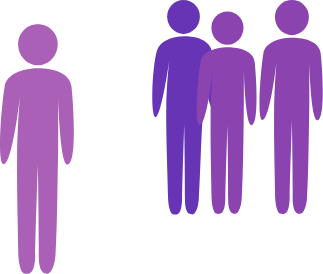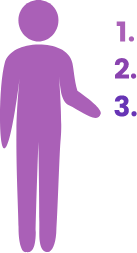The chances are you are here because you are looking at how best to support someone with both an Eating Disorder and Autism. This is a fairly common comorbidity seen within Eating Disorder wards, in fact, data from our own inpatient ward suggests that up to 37% of inpatients with Eating Disorders also have Autism or high autistic traits.
In light of this information, there are still no clinical guidelines or treatment adaptations to support this group. Lack of support and awareness has resulted in poorer treatment outcomes for this patient group which has lead to understandable frustration for patients, carers and clinicians, as well as a decrease in confidence in ability and knowledge for clinicians.
We acknowledge that there is no treatment guidance at the moment and that clinicians may be feeling at a loss as to which direction to go with in treatment. We want to help make suggestions and adaptations which can be used in treatment to increase your understanding and your confidence. We want to support with session materials, with rapport tips and with useful adaptations.
Actually, there are quite a few traits that overlap between the two conditions. These include:

Decreased social circles

Rigid, detailed-focused thinking styles

Emotional dysregulation
Although people with eating disorders (and not comorbid autism) have been found to have more sensory sensitivities, these are often not as extreme as those profiles seen in people with autism.
One important consideration is, is it the effects of starvation (if you are considering a patient with Anorexia Nervosa) or is it due to underlying Autism? Although our advice and materials were developed for people with Autism in mind, we have found that they are applicable and helpful for people with Eating Disorders without autism as well. This could be due to the high overlaps in traits and the effects of starvation on the brain.
PEACE implementation is about supporting all points of our triangle (patients, carers and clinicians). It means individualising care to each person who is referred to the pathway, and to their carers. This may sound like a lot of work for clinicians, but it will save time and energy in the long-run. This also means supporting the families of those on the pathway who, as autism is heritable, may even have autistic traits themselves. Its also about supporting our PEACE clinicians, and that’s what this section is about.
PEACE, for us, is about bringing awareness and supporting a previously unrecognised and unsupported group. We felt that we could not support this group without also supporting both their carers and their clinicians. We want this support to keep adapting as we learn more and as more people join the PEACE team. All of our experiences together can collectively shape how to best provide care. We want your feedback and your input. Being part of the PEACE team is not a passive process, its utilising the materials and the support and evaluating it based on your experience.
The PEACE network is made up of all of the Clinical Teams who have adopted, implemented and helped to improve the PEACE pathway. Forum coming soon!
Have a read of our latest blog posts! Whether you want to read about someone’s experiences, learn more about the comorbidity or explore nutritional recommendations, we hope you will find something that meets your needs!
A brief PEACE+ animation for people with ADHD and eating disorders. It explains how sensory, attention and interoceptive differences affect eating, and shares low-effort supports. Co-produced with clinicians and lived experience contributors.
On 20 May 2025, we welcomed over 250 attendees from across the UK and internationally to the fourth PEACE Pathway Conference. The day brought together clinicians, researchers, lived experience experts, and service providers to share knowledge and tools for improving care for autistic individuals with eating disorders.
A powerful animated short film that brings to life the stories of autistic girls and women in their own words.